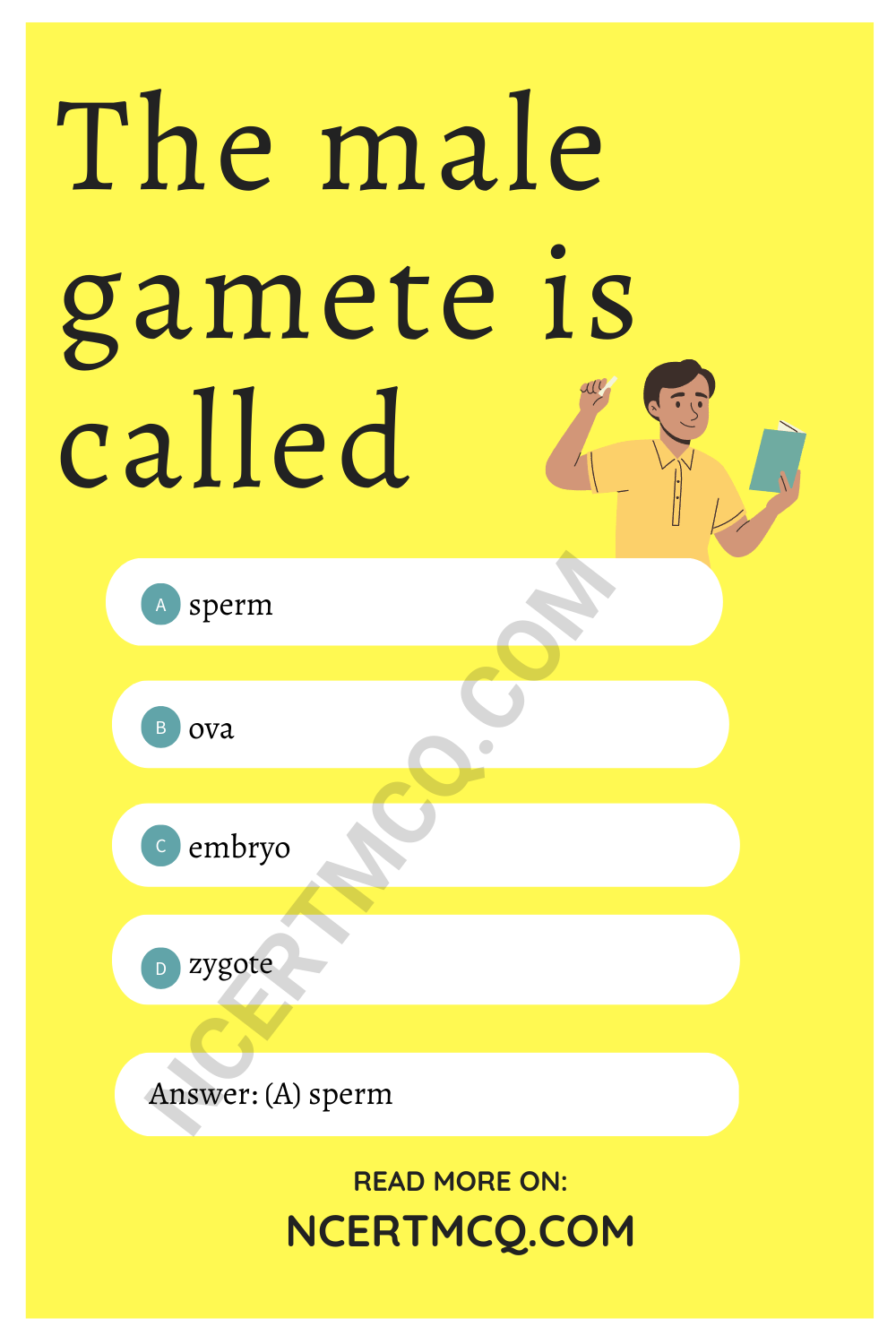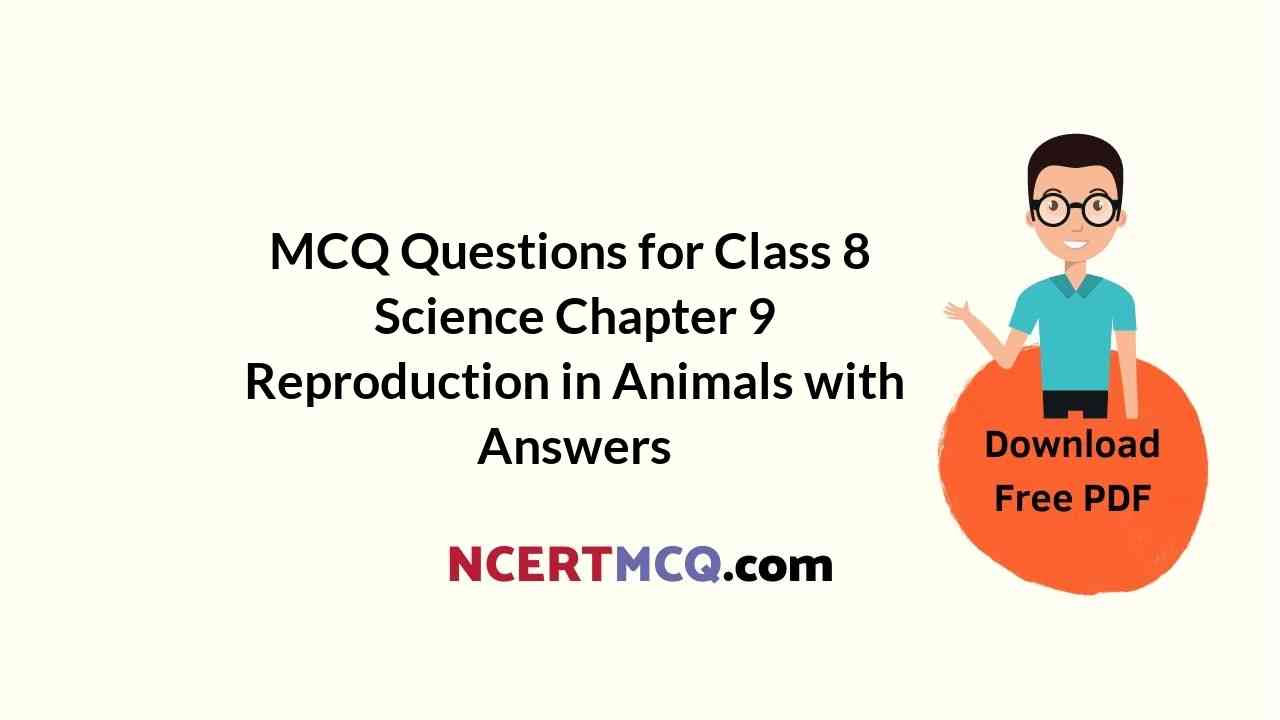Check the below Online Education NCERT MCQ Questions for Class 8 Science Chapter 9 Reproduction in Animals with Answers Pdf free download. MCQ Questions for Class 8 Science with Answers were prepared based on the latest exam pattern. We have provided Reproduction in Animals Class 8 Science MCQs Questions with Answers to help students understand the concept very well. https://ncertmcq.com/mcq-questions-for-class-8-science-with-answers/
You can refer to NCERT Solutions for Class 8 Science Chapter 9 Reproduction in Animals to revise the concepts in the syllabus effectively and improve your chances of securing high marks in your board exams.
Class 8 Science Chapter 9 MCQ With Answers
Science Class 8 Chapter 9 MCQs On Reproduction in Animals
Choose the correct option.
Reproduction In Animals Class 8 MCQ Question 1.
The number of modes by which animals reproduce are
(a) two
(b) three
(c) four
(d) none of these
Answer
Answer: (a) two
Class 8 Science Chapter 9 MCQ Question 2.
Binary fission is observed in
(a) Hydra
(b) yeast
(c) Amoeba
(d) human being
Answer
Answer: (c) Amoeba
Class 8 Reproduction In Animals MCQ Question 3.
Asexual reproduction is observed in
(a) cow
(b) buffalo
(c) sponge
(d) hen
Answer
Answer: (c) sponge
Class 8 Science Ch 9 MCQ Question 4.
In Hydra, the mode of reproduction is
(a) asexual
(b) sexual
(c) both (a) and (b)
(d) none of these
Answer
Answer: (a) asexual

MCQ Questions For Class 8 Science Chapter 9 Question 5.
The animals that produce new young ones are called
(a) viviparous
(b) oviparous
(c) both
(d) none of these
Answer
Answer: (a) viviparous
Class 8 Chapter 9 Science MCQ Question 6.
The male gamete or sperm consists of
(a) three parts
(b) two parts
(c) four parts
(d) none of these
Answer
Answer: (a) three parts
MCQ Of Reproduction In Animals Class 8 Question 7.
Ovum or eggs are formed in
(a) ovary
(b) testes
(c) penis
(d) ovident
Answer
Answer: (a) ovary
Ch 9 Science Class 8 MCQ Question 8.
Internal fertilisation takes place
(a) inside male body
(b) inside female body
(c) outside female body
(d) outside male body
Answer
Answer: (b) inside female body
MCQ On Reproduction In Animals Class 8 Question 9.
In humans, the development of fertilised egg takes place in the
(a) ovary
(b) oviduct
(c) testis
(d) uterus
Answer
Answer: (d) uterus
Science Class 8 Chapter 9 MCQ Question 10.
The cell formed after fertilisation is called
(a) embryo
(b) foetus
(c) zygote
(d) egg
Answer
Answer: (c) zygote
Class 8 Ch 9 Science MCQ Question 11.
The fusion of sperm and ova usually occur in the
(a) ovary
(b) uterus
(c) testes
(d) oviduct
Answer
Answer: (d) oviduct
Reproduction Class 8 MCQ Question 12.
Sets of reproductive terms are given below. Choose the set that has an incorrect combination.
(a) Sperm, testis, sperm duct, penis
(b) Menstruation, egg, oviduct, uterus
(c) Sperm, oviduct, egg, uterus
(d) Ovulation, egg, oviduct, uterus
Answer
Answer: (c) Sperm, oviduct, egg, uterus
Chapter 9 Class 8 Science MCQ Question 13.
Which of the following shows external fertilisation?
(a) Frog
(b) Human being
(c) Cow
(d) Hen
Answer
Answer: (a) Frog
Chapter 9 Science Class 8 MCQ Question 14.
Which one of the following is not a part of female reproductive organs?
(a) Uterus
(b) Ovary
(c) Oviduct
(d) Penis
Answer
Answer: (d) Penis
Class 8th Science Chapter 9 MCQ Question 15.
In the list of animals given below, hen is the odd one out.
‘human being, cow, dog, hen’
The reason for this is
(a) it undergoes internal fertilisation
(b) it is oviparous
(c) it is viviparous
(d) it undergoes external fertilisation
Answer
Answer: (b) it is oviparous
Question 16.
Animals exhibiting external fertilisation produce a large number of gametes. Pick the appropriate reason from the following
(a) The animals are small in size and want to produce more offsprings.
(b) Food is available in plenty in water.
(c) To ensure better chance of fertilisation.
(d) Water promotes production of large number of gametes.
Answer
Answer: (c) To ensure better chance of fertilisation.
Question 17.
Which is not a viviparous animal?
(a) Human being
(b) Cow
(c) Dog
(d) Butterfly
Answer
Answer: (d) Butterfly
Question 18.
Budding occurs in
(a) Amoeba
(b) dog
(c) Paramecium
(d) yeast
Answer
Answer: (d) yeast
Question 19.
The female gamete is called
(a) ova
(b) sperm
(c) zygote
(d) uterus
Answer
Answer: (a) ova
Question 20.
The male gamete is called
(a) sperm
(b) ova
(c) embryo
(d) zygote
Answer
Answer: (a) sperm

Match the items given in column I suitably with those given in column II.
| Column I | Column II |
| 1. Fission of male and female gametes | (a) Frog |
| 2. External fertilisation | (b) Fertilisation |
| 3. Female gametes | (c) Lay eggs |
| 4. Oviparous | (d) Asexual reproduction |
| 5. Single parent | (e) Ovum |
| 6. Main female reproductive organ | (f) Sperm |
| 7. Amoeba | (g) Ovary |
| 8. Yeast | (h) Binary fission |
| 9. Cloned sheep | (i) Budding |
| 10. Testes | (j) Dolly |
Answer
Answer:
| Column I | Column II |
| 1. Fission of male and female gametes | (b) Fertilisation |
| 2. External fertilisation | (a) Frog |
| 3. Female gametes | (e) Ovum |
| 4. Oviparous | (c) Lay eggs |
| 5. Single parent | (d) Asexual reproduction |
| 6. Main female reproductive organ | (g) Ovary |
| 7. Amoeba | (h) Binary fission |
| 8. Yeast | (i) Budding |
| 9. Cloned sheep | (j) Dolly |
| 10. Testes | (f) Sperm |
Fill in the blanks with suitable word/s.
1. __________ is the process that ensures continuity of life on earth.
Answer
Answer: Reproduction
2. __________ are the cells involved in sexual reproduction.
Answer
Answer: Gametes
3. The animals which lay eggs are called __________.
Answer
Answer: oviparous
4. The animals which give birth to young ones are called __________.
Answer
Answer: viviparous
5. __________ is the process of fusion of gametes.
Answer
Answer: Fertilisation
6. The process of reproduction involving fusion of male and female gametes is called __________ reproduction.
Answer
Answer: sexual
7. The testes produce the male gametes called __________.
Answer
Answer: sperms
8. Sperms are __________ in size.
Answer
Answer: very small
9. Sperm is a __________ cell.
Answer
Answer: single
10. The female reproductive organ consists of __________, __________ and __________.
Answer
Answer: ovaries, oviduct, uterus
11. The ovary produces female gamete called __________.
Answer
Answer: ova (egg)
12. An ova or egg is a __________ cell.
Answer
Answer: single
13. __________ is a fertilised egg.
Answer
Answer: Zygote
14. Internal fertilisation takes place inside __________.
Answer
Answer: female body
15. Babies born through __________ technique are called test tube babies.
Answer
Answer: IVF
16. __________ fertilisation takes place outside the female body.
Answer
Answer: External
17. Fertilisation results in the formation of __________ and __________.
Answer
Answer: zygote, embryo
18. All living organisms have the power to __________.
Answer
Answer: reproduce
19. __________ produces sperm in male.
Answer
Answer: Testes
20. In __________ reproduction only a single parent is involved.
Answer
Answer: asexual
State whether the given statements are true or false.
1. Zygote is an unfertilised egg.
Answer
Answer: False
2. External fertilisation occurs in frog.
Answer
Answer: True
3. An embryo is made up of multicells.
Answer
Answer: True
4. Amoeba reproduces by budding.
Answer
Answer: False
5. Fertilisation is not necessary in asexual reproduction.
Answer
Answer: True
6. Each sperm is multicellular.
Answer
Answer: False
7. A new young one is developed from a cell called gamete.
Answer
Answer: False
8. Cloning is a sexual reproduction method in any living organisms.
Answer
Answer: False
9. Viviparous animals give birth to young ones.
Answer
Answer: True
10. Male gametes are sperms.
Answer
Answer: True
11. Female gametes are ovum.
Answer
Answer: True
12. Starfish reproduces by external fertilisation.
Answer
Answer: True
13. Two individuals are needed for sexual reproduction.
Answer
Answer: True
14. Internal fertilisation occurs in dogs and cats.
Answer
Answer: True
15. An embryo grows in uterus.
Answer
Answer: True
We hope the given NCERT MCQ Questions for Class 8 Science Chapter 9 Reproduction in Animals with Answers Pdf free download will help you. If you have any queries regarding Reproduction in Animals CBSE Class 8 Science MCQs Multiple Choice Questions with Answers, drop a comment below and we will get back to you soon.
Class 8 Science MCQ:
- Crop Production and Management Class 8 MCQ
- Microorganisms: Friend and Foe Class 8 MCQ
- Synthetic Fibres and Plastics Class 8 MCQ
- Materials: Metals and Non-Metals Class 8 MCQ
- Coal and Petroleum Class 8 MCQ
- Combustion and Flame Class 8 MCQ
- Conservation of Plants and Animals Class 8 MCQ
- Cell Structure and Functions Class 8 MCQ
- Reproduction in Animals Class 8 MCQ
- Reaching the Age of Adolescence Class 8 MCQ
- Force and Pressure Class 8 MCQ
- Friction Class 8 MCQ
- Sound Class 8 MCQ
- Chemical Effects of Electric Current Class 8 MCQ
- Some Natural Phenomena Class 8 MCQ
- Light Class 8 MCQ
- Stars and the Solar System Class 8 MCQ
- Pollution of Air and Water Class 8 MCQ
